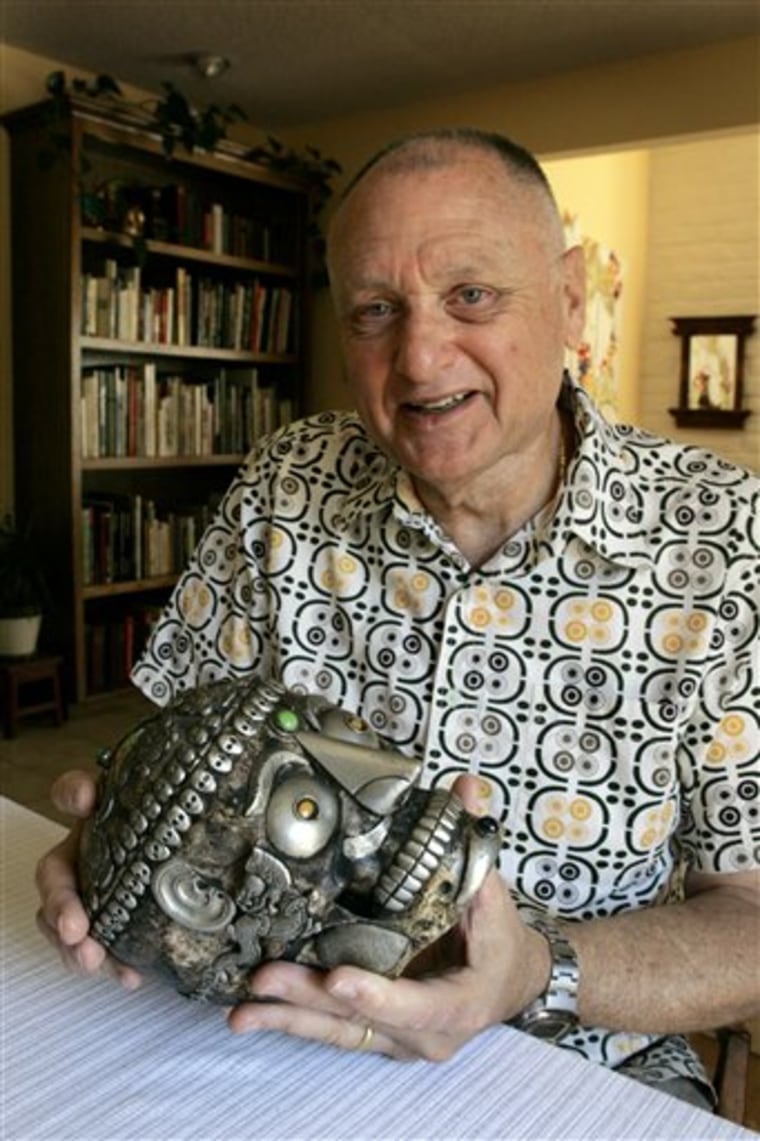The man considered the father of lethal injection in the United States said it doesn't matter whether three fatal drugs are used or one — as his home state of Ohio has proposed — as long as the drug works efficiently.
Dr. Jay Chapman, who developed the lethal three-drug cocktail in the 1970s when he was the Oklahoma state medical examiner, said Ohio's decision to become the first state in the nation to use only one drug achieves that goal.
He said there was no particular reason he didn't propose a single drug, other than a concern that it might take a little longer to work. His three-drug method became widespread after states copied Oklahoma.
Now Chapman, semiretired in California at age 70, said he believes the system he helped create shows condemned inmates too much mercy.
"Their death is made much too easy by this sort of protocol for the crimes that they committed," he told The Associated Press last week.
Similar to pet euthanization
But he said the hope was injection would avoid the pain-and-suffering arguments and allow executions to take place.
Under Ohio's new system, executioners would use a single large dose of thiopental sodium, an anesthetic, to put inmates to death, similar to the way veterinarians euthanize animals.
The one-drug system has never been used on condemned inmates in the United States.
State officials proposed the change after state executioners tried unsuccessfully Sept. 15 to find a usable vein for condemned killer Romell Broom. Broom, who raped and killed a 14-year-old girl in 1984 in Cleveland, is challenging the state's right to try a second time.
The new protocol would provide a backup method using two drugs injected into a muscle if no usable vein can be found, as happened with Broom. The current system uses one drug that puts inmates to sleep, a second that paralyzes them and a third that stops their heart.
Death penalty opponents have long argued that the three drugs could cause offenders severe pain if the first drug didn't adequately knock out an inmate.
Capital punishment entered Chapman's life early. A childhood friend, Chester Gregg, was executed for killing his wife in July 1952.
Chapman, who grew up in the southwest Ohio town of Blanchester, and his mother stayed up with Gregg's mother the night of the execution. He said the event had no bearing on his later work.
"It's a totally separate thing," Chapman said. "It's just an experience I had along the way."
Two-drug proposed initially
Chapman, a forensic pathologist, was the Oklahoma medical examiner while state officials were looking for a new execution method shortly after the U.S. Supreme Court declared capital punishment constitutional. Lawmakers then began looking for a humane method of execution to replace the electric chair.
Chapman initially proposed a two-drug approach: an anesthetic followed by a paralytic drug. He later added potassium chloride, to provide for instantaneous death.
"We felt that by going with this type of regimen, no one could suggest that it was cruel and unusual because people undergo this very protocol every day for anesthetic for surgery world-round," Chapman said.
The U.S. Supreme Court last year upheld the constitutionality of lethal injection, ruling on Kentucky's three-drug method, which is similar to that in Ohio and many other states.
A separate lawsuit challenges Ohio's protocol, questioning in recent months the qualifications of executioners, some of whom are paramedics.
Attorneys for death row inmates mention the case of Joseph Clark when raising questions about executioners' ability to perform lethal injection. In 2006, Clark's execution had to be restarted after he pushed himself up and announced the drugs weren't working. An execution in 2007 also took much longer that usual. The state has repeatedly said it's confident in its execution team.
The state argues that the new method renders the lawsuit moot, since it removes the possibility of pain, and it addresses situations such as the Broom case. Opponents says moving ahead quickly with the new, untested method amounts to "human experimentation."
Ohio hopes to have its new system in place in time for a possible execution Dec. 8.
